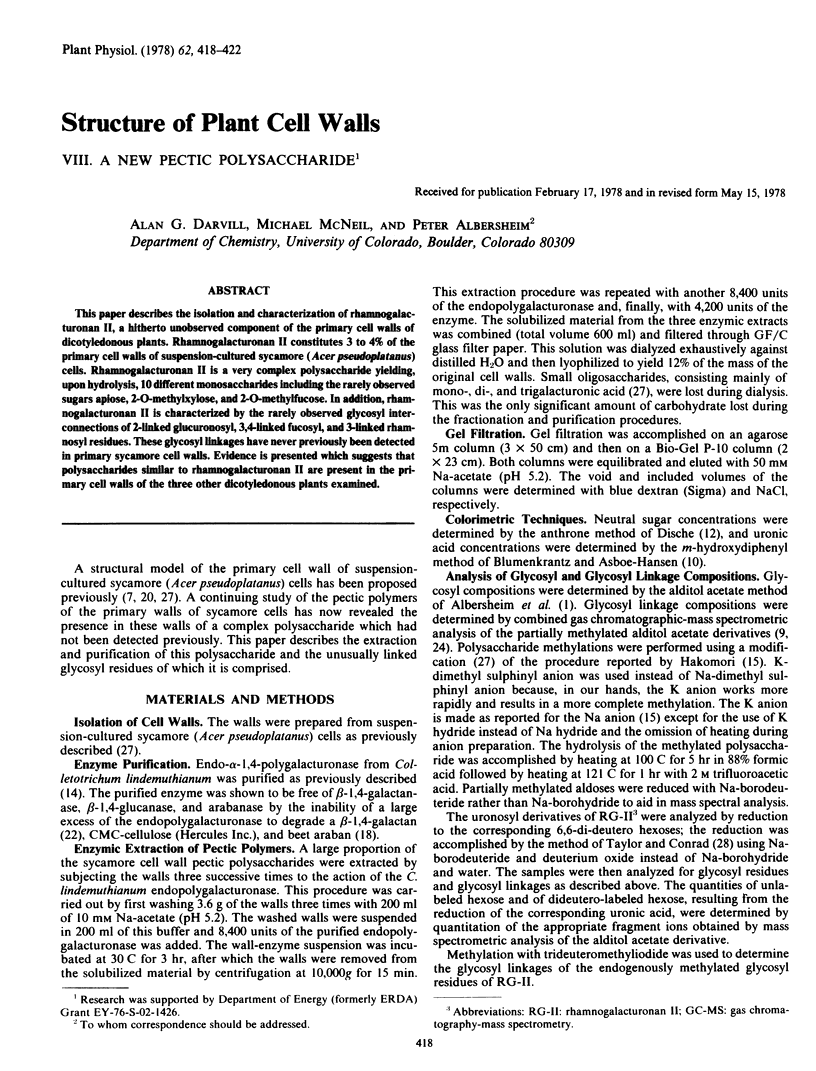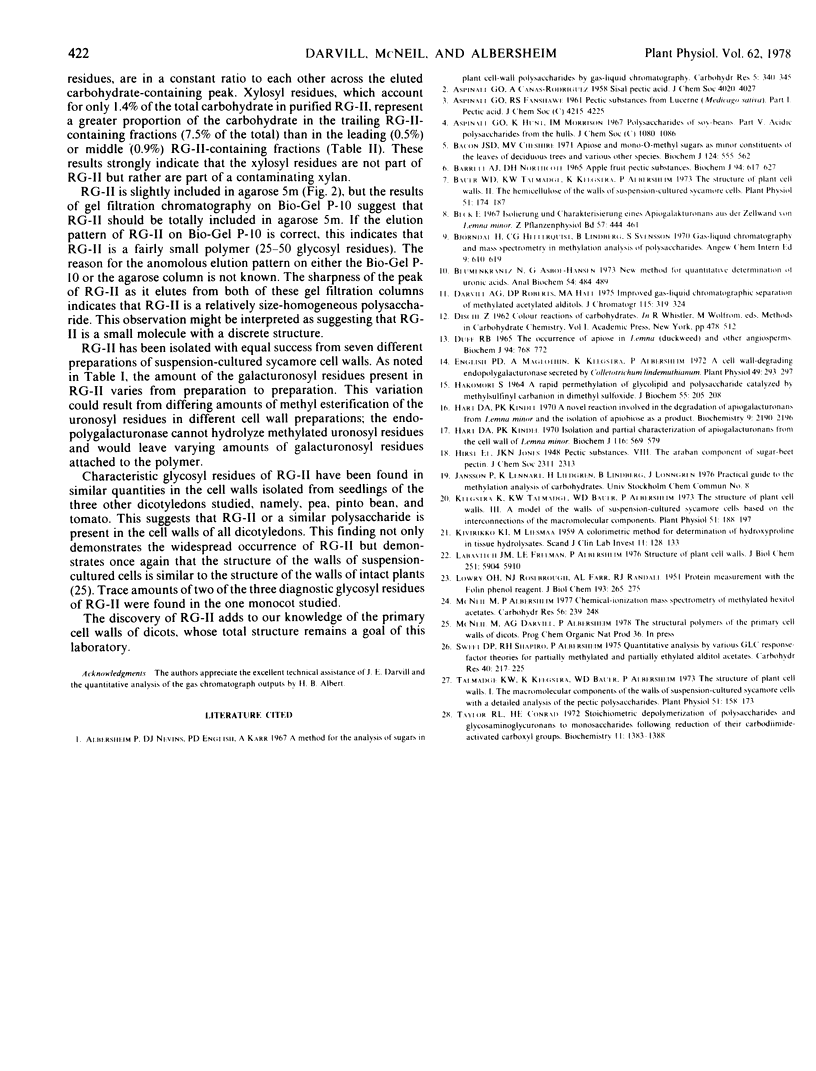Abstract
This paper describes the isolation and characterization of rhamnogalacturonan II, a hitherto unobserved component of the primary cell walls of dicotyledonous plants. Rhamnogalacturonan II constitutes 3 to 4% of the primary cell walls of suspension-cultured sycamore (Acer pseudoplatanus) cells. Rhamnogalacturonan II is a very complex polysaccharide yielding, upon hydrolysis, 10 different monosaccharides including the rarely observed sugars apiose, 2-O-methylxylose, and 2-O-methylfucose. In addition, rhamnogalacturonan II is characterized by the rarely observed glycosyl interconnections of 2-linked glucuronosyl, 3,4-linked fucosyl, and 3-linked rhamnosyl residues. These glycosyl linkages have never previously been detected in primary sycamore cell walls. Evidence is presented which suggests that polysaccharides similar to rhamnogalacturonan II are present in the primary cell walls of the three other dicotyledonous plants examined.
Full text
PDF




Selected References
These references are in PubMed. This may not be the complete list of references from this article.
- Bacon J. S., Cheshire M. V. Apiose and mono-O-methyl sugars as minor constituents of the leaves of deciduous trees and various other species. Biochem J. 1971 Sep;124(3):555–562. doi: 10.1042/bj1240555. [DOI] [PMC free article] [PubMed] [Google Scholar]
- DUFF R. B. THE OCCURRENCE OF APIOSE IN LEMNA (DUCKWEED) AND OTHER ANGIOSPERMS. Biochem J. 1965 Mar;94:768–772. doi: 10.1042/bj0940768. [DOI] [PMC free article] [PubMed] [Google Scholar]
- English P. D., Maglothin A., Keegstra K., Albersheim P. A Cell Wall-degrading Endopolygalacturonase Secreted by Colletotrichum lindemuthianum. Plant Physiol. 1972 Mar;49(3):293–298. doi: 10.1104/pp.49.3.293. [DOI] [PMC free article] [PubMed] [Google Scholar]
- Hart D. A., Kindel P. K. A novel reaction involved in the degradation of apiogalacturonans from Lemna minor and the isolation of apibiose as a product. Biochemistry. 1970 May 12;9(10):2190–2196. doi: 10.1021/bi00812a024. [DOI] [PubMed] [Google Scholar]
- Hart D. A., Kindel P. K. Isolation and partial characterization of apiogalacturonans from the cell wall of Lemna minor. Biochem J. 1970 Feb;116(4):569–579. doi: 10.1042/bj1160569. [DOI] [PMC free article] [PubMed] [Google Scholar]
- Keegstra K., Talmadge K. W., Bauer W. D., Albersheim P. The Structure of Plant Cell Walls: III. A Model of the Walls of Suspension-cultured Sycamore Cells Based on the Interconnections of the Macromolecular Components. Plant Physiol. 1973 Jan;51(1):188–197. doi: 10.1104/pp.51.1.188. [DOI] [PMC free article] [PubMed] [Google Scholar]
- LOWRY O. H., ROSEBROUGH N. J., FARR A. L., RANDALL R. J. Protein measurement with the Folin phenol reagent. J Biol Chem. 1951 Nov;193(1):265–275. [PubMed] [Google Scholar]
- Talmadge K. W., Keegstra K., Bauer W. D., Albersheim P. The Structure of Plant Cell Walls: I. The Macromolecular Components of the Walls of Suspension-cultured Sycamore Cells with a Detailed Analysis of the Pectic Polysaccharides. Plant Physiol. 1973 Jan;51(1):158–173. doi: 10.1104/pp.51.1.158. [DOI] [PMC free article] [PubMed] [Google Scholar]


